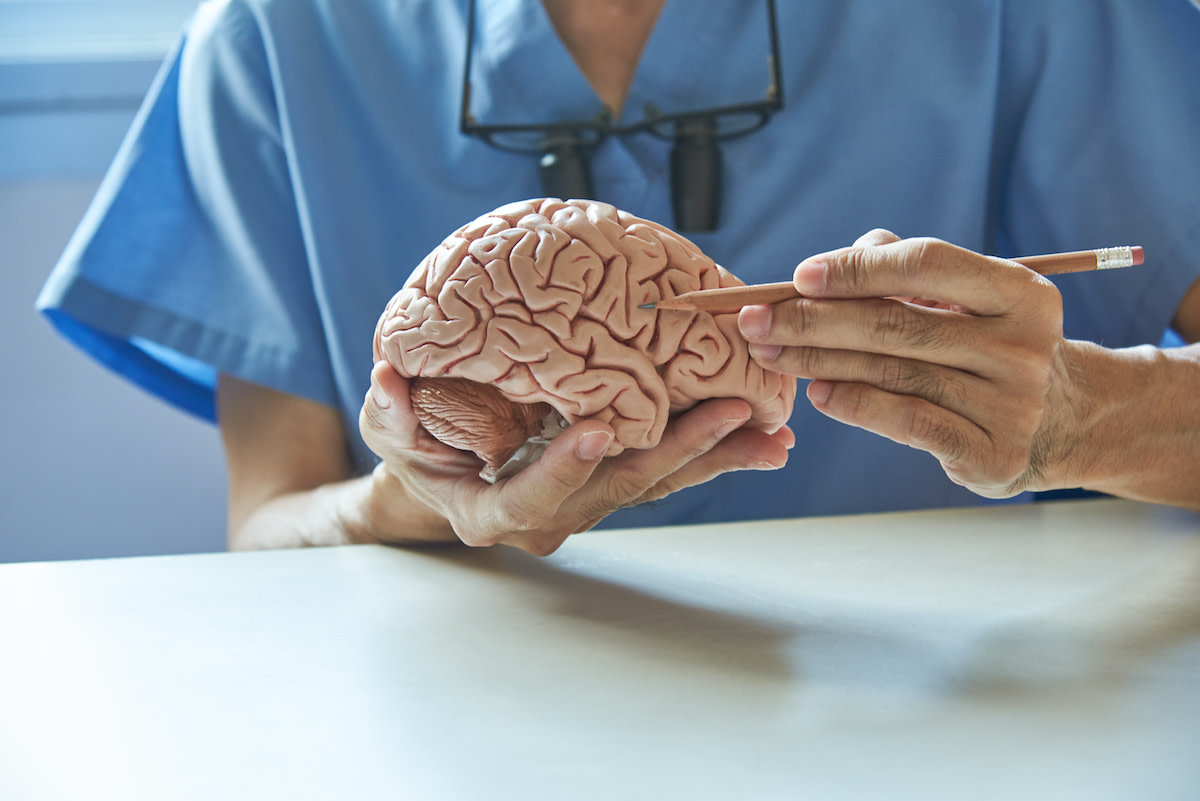Temporal Lobe Anatomy: 4 Functions of Temporal Lobe
Written by MasterClass
Last updated: Sep 23, 2021 • 4 min read
The brain contains temporal lobes to help process sensory information, assist with learning, and enable memory.
Learn From the Best
What Is the Temporal Lobe?
The temporal lobe, also known as the neocortex, is a region of the brain that deals with sensory stimuli (mainly auditory stimuli), memory, and emotion. It is a part of the cerebrum, the section of the central nervous system responsible for conscious thought and voluntary action.
Where Is the Temporal Lobe Located in the Brain?
The human brain has two temporal lobes—one in each hemisphere. Each brain has a left hemisphere and a right hemisphere, and thus a left temporal lobe and a right temporal lobe. Each lobe is a part of the forebrain, the frontmost portion of the brain that contains the cerebrum and its various lobes, including the temporal lobe, the parietal lobe, the frontal lobe, and the occipital lobe.
The outer surface of the temporal lobe is part of the cerebral cortex, which contains the gray matter neurons the body uses for conscious thought. It can be divided into three gyri: the superior temporal gyrus, the medial temporal gyrus, and the anterior temporal gyrus. Beneath the cerebral cortex is a thick layer of white matter, which gets its color from bundles of neurons with white myelin sheaths. White matter provides connectivity between the temporal lobe and other parts of the central nervous system such as the brainstem. The body’s primary auditory cortex is within the Sylvian fissure in the temporal lobe, also called lateral fissure.
The area below the temporal lobe, called the limbic cortex, includes the amygdala, the hippocampal formation, the parahippocampal gyrus, and the uncus.
5 Parts of the Temporal Lobe
The temporal lobe contains several substructures that assist in its function.
- 1. Dorsal region: The dorsal region, the superior region of the frontal lobe, contains the brain's primary auditory cortex, which neuroscience has shown to be the primary receptor in auditory cognition.
- 2. Hippocampus: The hippocampus is an essential part of the brain’s limbic system, a group of brain structures in the cerebral cortex responsible for behavioral and emotional responses.
- 3. Amygdala: An amygdala is a cluster of nuclei that prominently govern emotional responses, emotional memory, and decision-making.
- 4. Broca’s area: The Broca’s area, in the frontal cortex of the brain, is essential for developing motor skills and speech production.
- 5. Wernicke’s area: The Wernicke’s area is in the temporal lobe on the left side of the brain. This area’s primary function is language development and comprehension of speech.
4 Functions of the Temporal Lobe
The brain's temporal lobe performs multiple vital functions within its neuroanatomy:
- 1. Auditory cognition: The brain's primary auditory cortex, the body's principal cortical structure for processing sound, is within the temporal lobe. The auditory cortex enables language comprehension in the Wernicke's area, between temporal and parietal lobes, and the Broca's area in the frontal lobe. This comprehension goes beyond audio stimuli and includes visual stimuli, such as sign language—a phenomenon still being studied by neurologists.
- 2. Semantic memory: Semantic memory, or long-term memory, is governed by multiple brain regions, and the temporal lobe is chief among them. Neurology suggests the most anterior part of the temporal lobe plays a vital role in memory.
- 3. Visual processing: The left and right cortices of the temporal lobe aid in the processing of visual stimuli. Neuroanatomy reveals that most of the brain's visual processing occurs in the occipital lobe in the visual cortex. However, magnetic resonance imaging has confirmed that the temporal lobe also plays a role in visual encoding. Specifically, the ventral part of the occipital lobe interacts with the posteroventral portion of the temporal lobe to process certain visual stimuli.
- 4. Emotional response: Neuroimaging has linked many aspects of emotional response to the amygdala, which is located within the temporal lobe.
5 Effects of Temporal Lobe Dysfunction
Due to the interconnected functions of the central nervous system, temporal lobe damage can cause broad impairment in the brain. Conditions related to temporal lobe dysfunction include:
- 1. Temporal lobe epilepsy: This common form of epilepsy is caused by dysfunction in the medial temporal lobe, the area under the cerebral cortex that contains the hippocampus. The condition is linked to hippocampal sclerosis, which is the severe loss of cells in the hippocampus.
- 2. Pick's Disease: Pick's Disease, also known as frontotemporal dementia, is caused by damage to the frontal lobe and the temporal lobe.
- 3. Wernicke’s aphasia: Wernicke’s aphasia affects a person’s ability to properly use and process language. It is linked to ischemic stroke, a type of stroke that affects the temporal lobe.
- 4. Schizophrenia: Schizophrenia affects multiple regions of the brain, but it may specifically involve random activation of the temporal lobe's primary auditory cortex.
- 5. Hearing loss: Bitemporal lesions on the temporal lobes can harm the body's ability to hear and even cause deafness.
- 6. Savant syndrome: For reasons not fully understood by neuroscientists, damage to the anterior left temporal lobe can cause savant syndrome, where a person has limited function in some activities but heightened abilities in specific skills such as mathematics, music, or visual art.
Want to Learn Even More About Cultivating a Mindfulness Practice?
Find something comfortable to sit or lie on, grab a MasterClass Annual Membership, and dial into the present moment with Jon Kabat-Zinn, the father of the Western mindfulness movement. From formal meditation exercises to examinations of the science behind mindfulness, Jon will prepare you for the most important practice of them all: life itself.
